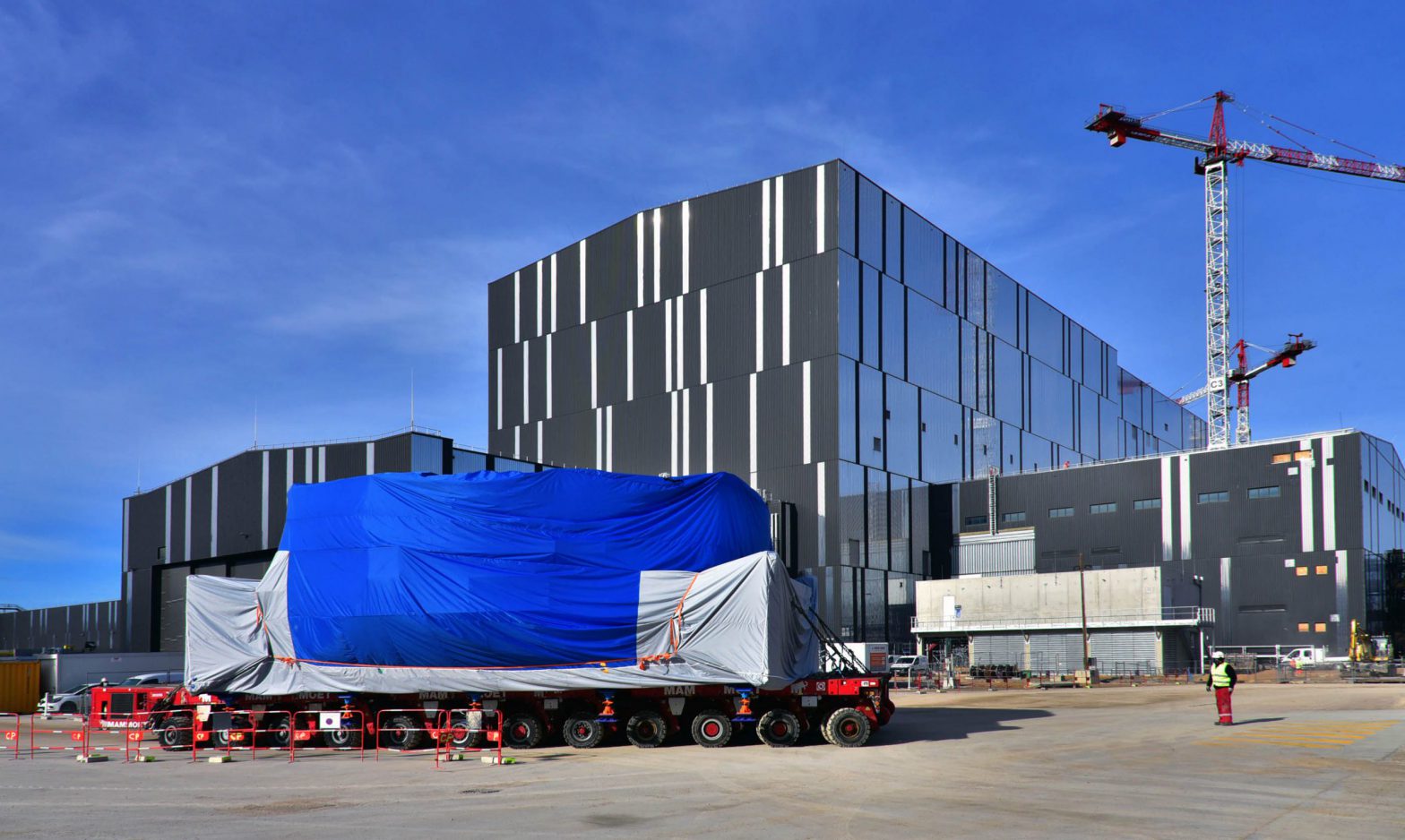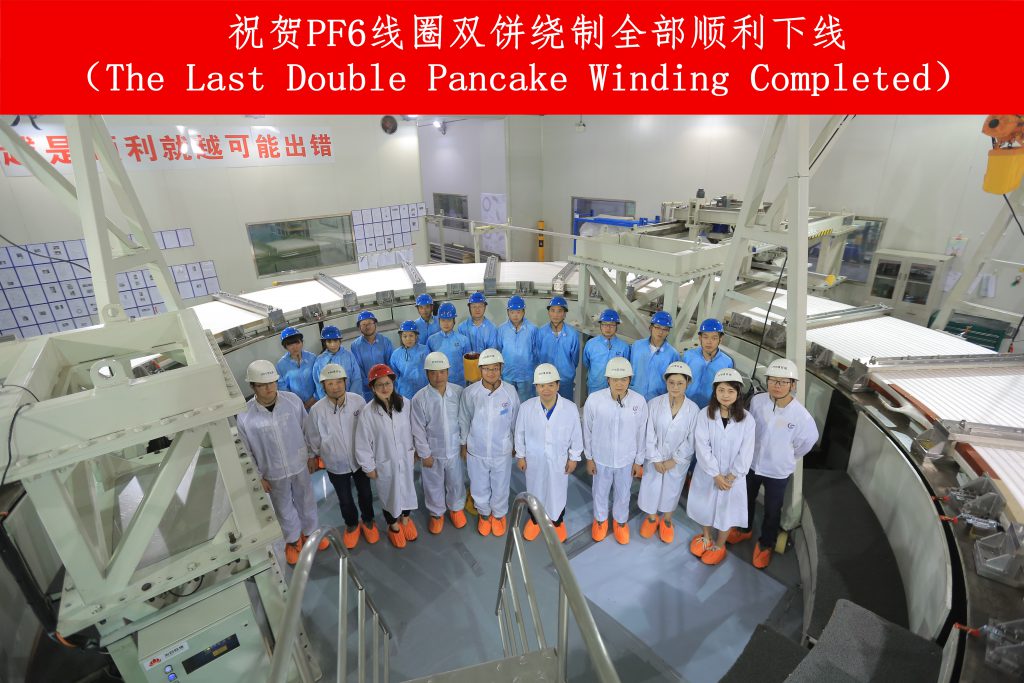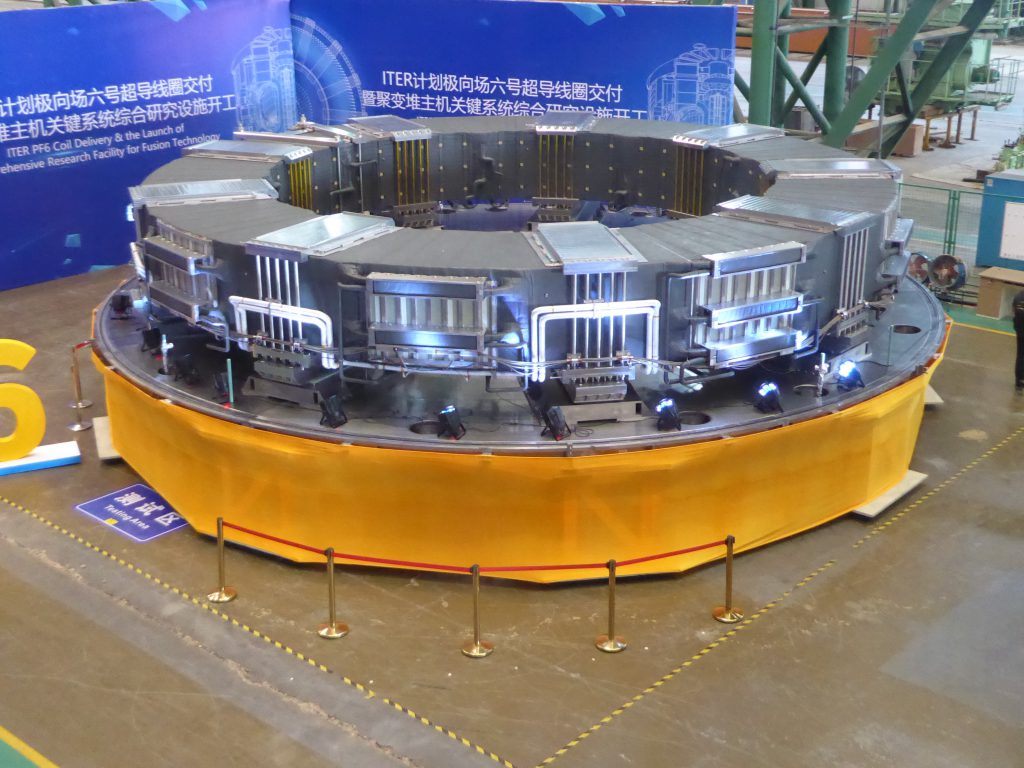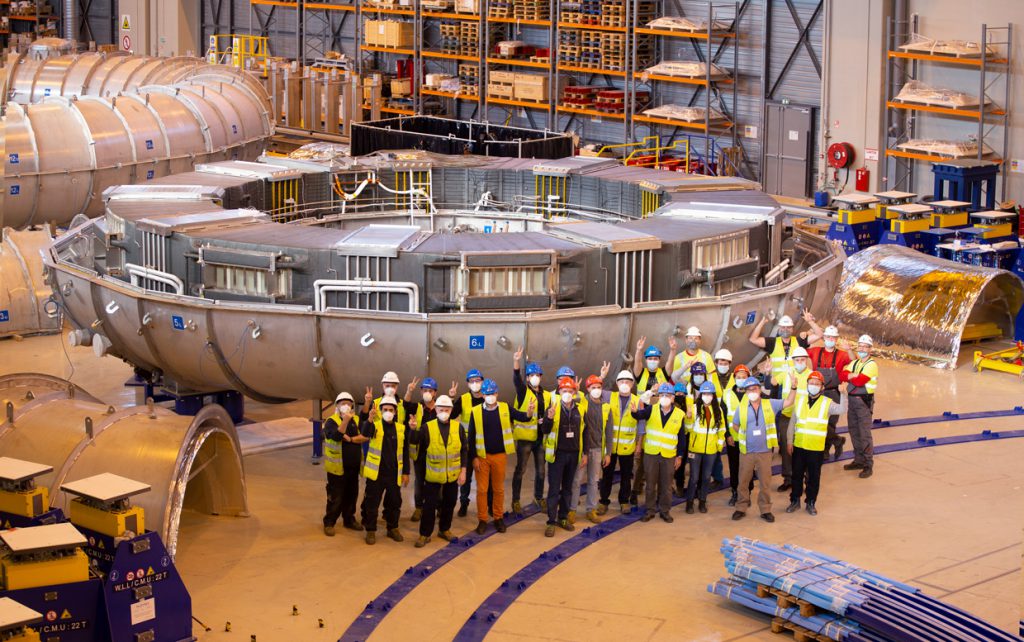ITER receives its first Poloidal Field coil

ITER Poloidal Field coil six manufactured by Europe and China, handed over to ITER Organization in order to plan its installation it in the Tokamak building, the home of the ITER machine, Cadarache, January 2021
The moment has finally come. It’s to hand over the first of the six ITER Poloidal Field coils. This was a day of jubilation on-site as the trolley transporter carrying the magnet, departed from Europe’s Poloidal Field coils factory and started heading towards the storage area from where it will depart again in order to be installed in the Tokamak pit, the “home” of the machine. The diameter of the coil is 10 m and weighs approximately 350 t. The component, for which more than 130 people have been involved during the last eight years, is now under the custody of ITER Organization (IO), which has the responsibility to assemble the biggest fusion device.
Europe and China have been working side-by-side, racing against time to manufacture this first-of-a-kind magnet which will control the shape and stability of the ITER plasma. Their cooperation started in 2013 and has been filled with twists and turns almost like the layers of the superconductive coil. International collaboration is the backbone of the ITER project. It facilitates the exchange of know-how by building bridges between different teams around the world. When it became clear that Europe could not manufacture both the fifth and sixth poloidal coils in parallel, due to their tight delivery deadlines almost one month apart, China volunteered to give a helping hand by making available its personnel at ASIPP (Institute of Plasma Physics of the Chinese Academy of Sciences). In exchange, their young team of engineers would gain first-hand experience producing such coil. An agreement was signed and F4E staff formed part of the team offering guidance and expertise.
Pierluigi Valente, F4E Technical Responsible Officer for the procurement, who visited and selected the facility for the manufacturing in China, recalls how things started. “When we decided to produce the coil in collaboration with China, we had to set up an entire operation remotely, work together for the documentation, the tooling, and follow up the production of the equipment. In parallel, when fabrication started to gain pace, we started discussing how to transfer the coil. Roadworks were required to improve the ITER itinerary so that a component of that size and load could be transported. When the coil was delivered on-site last summer, we finally saw all those years of work coming together.”
For Peter Readman, F4E Technical Support Officer, who travelled at least 30 times to the Province of Hefei, China, the component felt rather familiar because he followed the manufacturing on-site. “The first time we visited the factory, it seemed a vast facility with very little tooling inside. We couldn’t figure out how it would all come together so quickly. Our counterparts simply worked round the clock and in no time, it became a production plant. We started by setting up the first winding tooling, which was essential for the production of the first mock-ups. Little by little, we started gaining confidence and eventually we hit a major milestone stacking the Double Pancakes, and subsequently impregnation. I recall these moments not only because of their technical significance, but because of the pride we felt accomplishing this. The kindness, enthusiasm and respect of our colleagues in ASIPP is something I will always remember.”

In September 2019, a ceremony was organised in Hefei to mark the end of fabrication. Final acceptance tests still needed to be performed. Alessandro Bonito-Oliva, F4E Magnets Programme Manager, travelled to China and spent more than three months on-site supervising final tests, developing and implementing innovative solutions in order to finalise the last important technical details. “It proved to be an extremely fruitful experience because much of the technology used for the production of this coil is valuable for the remaining ones. And when you produce something for the first time, you inevitably bump into various issues that cannot be anticipated. Quick and creative thinking, backup plans, team spirit with all parties (F4E, IO and ASIPP) and perseverance were essential for the successful outcome. My aim was to conclude the works, resolve any pending technical issues and get the coil to Europe in order to start the cold tests,” he explains. A few months later, in July 2020, the magnet was delivered paving the way for cold tests.

After inspection checks, the F4E team together with ASG Superconductors and Criotec, started preparing the ground for the first-ever cooling down exercise of the magnet. Monica Martinez Lopez, F4E Technical Officer, was involved in the tests. “We did a lot of preparatory work for the arrival of the magnet. The cryostat was set up, in order to insert the coil and perform the tests; the processes were agreed and the time frames. We calculated roughly 45 days for testing to be completed. We started in August and had to incorporate additional COVID-19 protocols. In the end, the component passed all tests and this was a moment of collective triumph for the team. We had the first of the PF coils ready and much of what we learned was of help for the rest to come.”

Alessandro Bonito-Oliva sums up the experience as “extremely demanding but very enriching. From the outset, others may have hesitated given the interfaces or the uncertainties. We didn’t and this is to the credit of the entire team. I would also like to acknowledge the valuable support we received from the ITER Organization team, which was directly involved in the final stage. Our objective was to work closely together, learn from one another, plan well in advance, and remain focused. We are proud of this collective achievement. This is the first PF coil handed over to ITER. The next one is due in the next months”